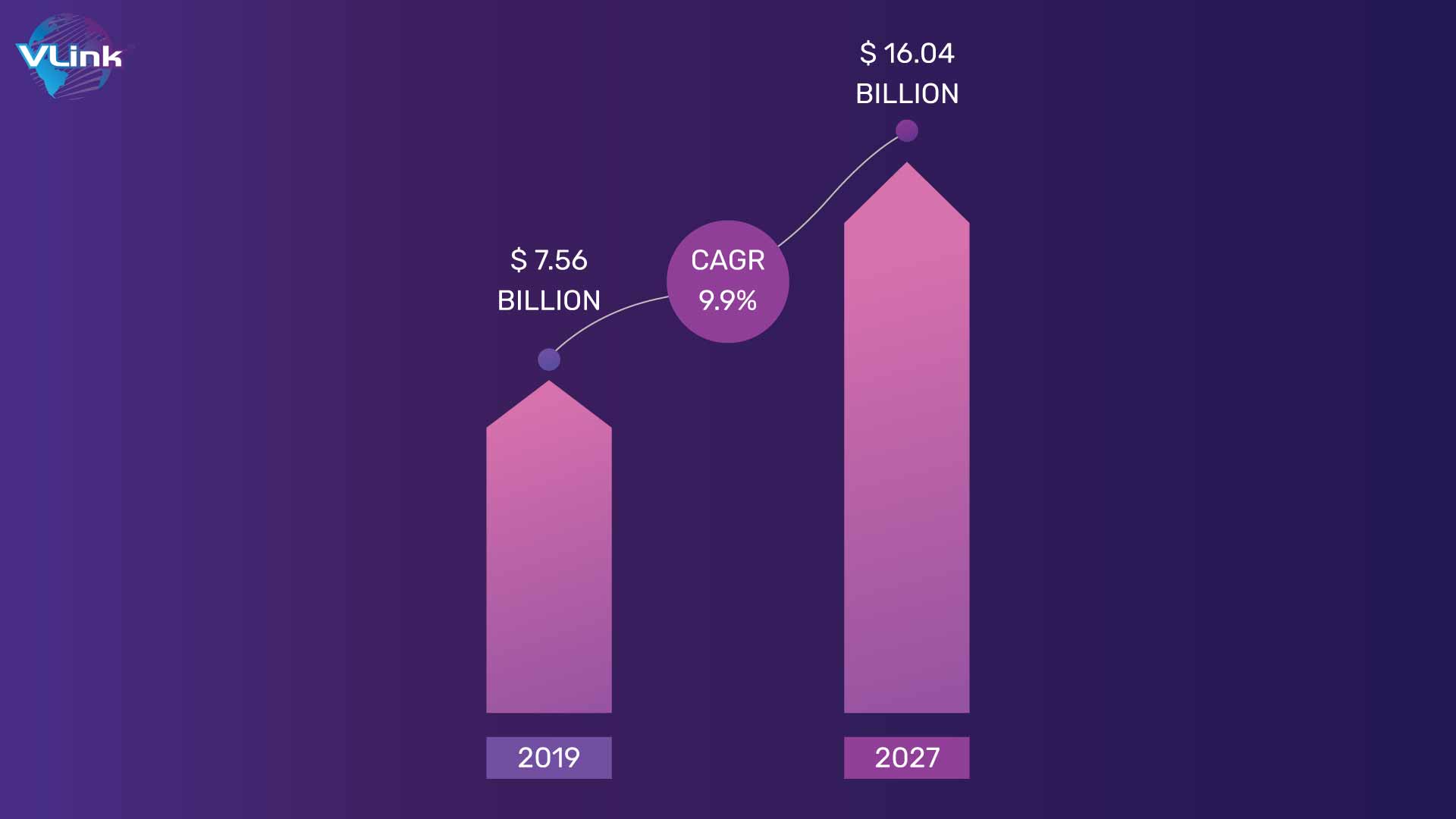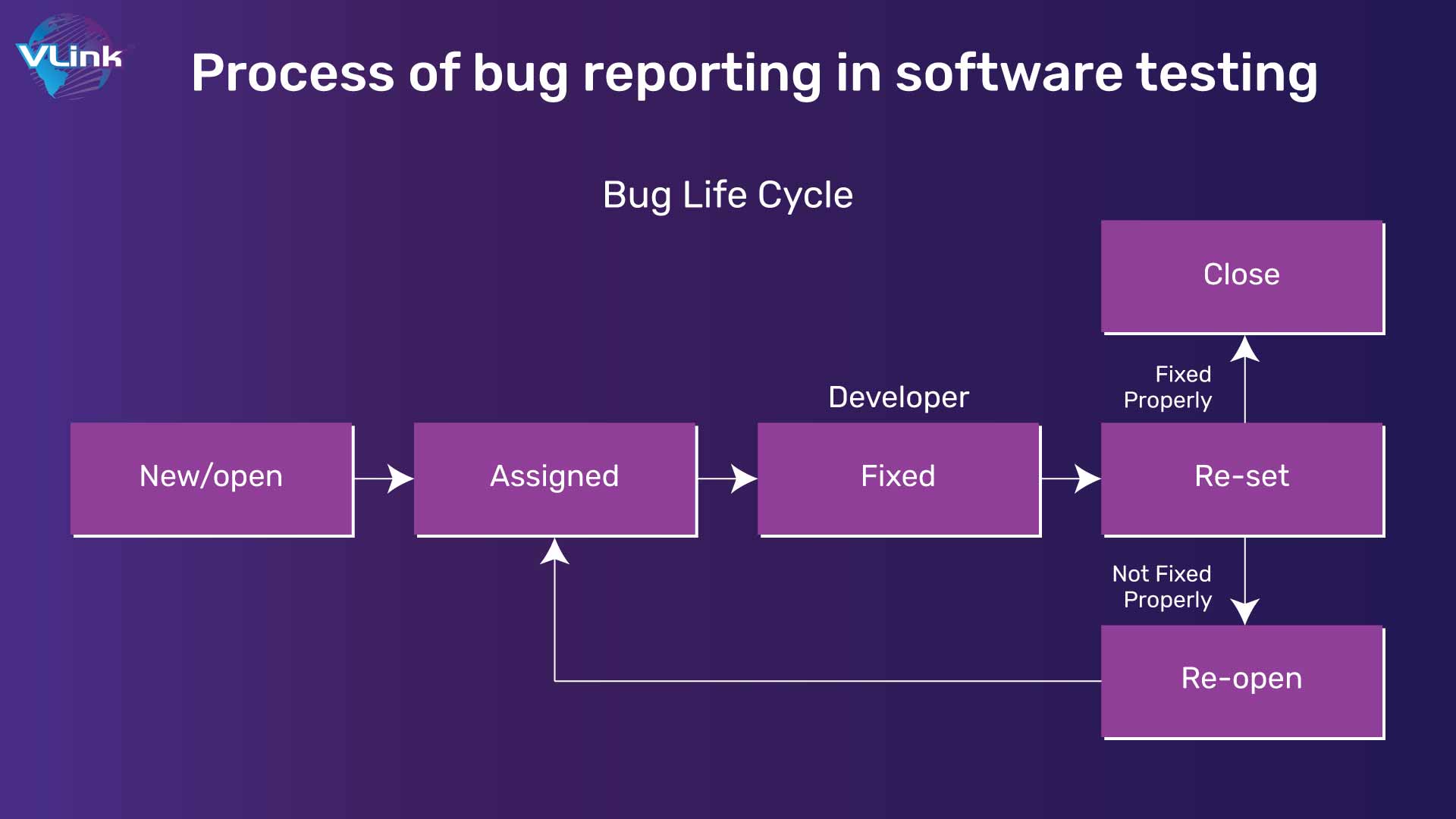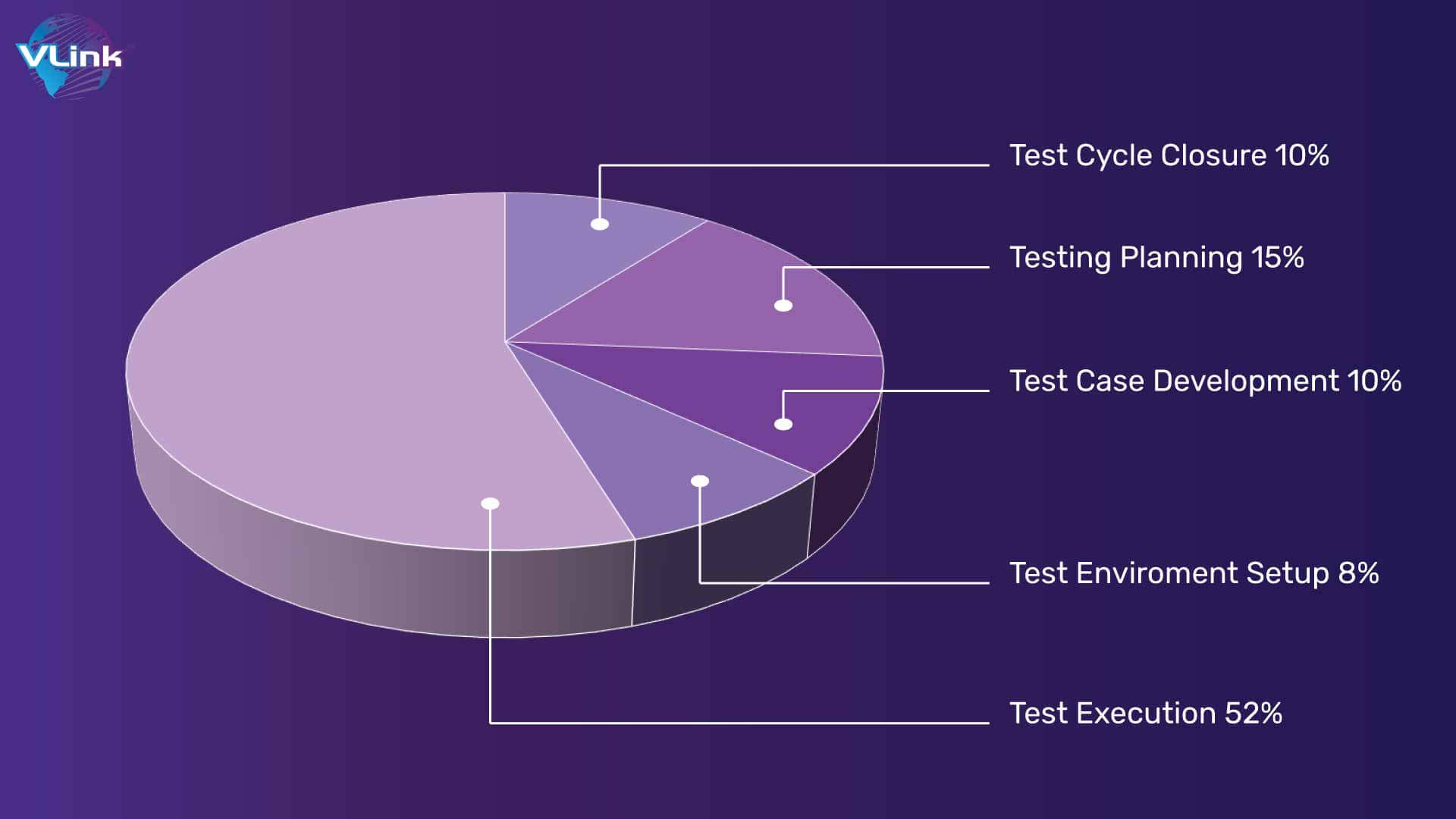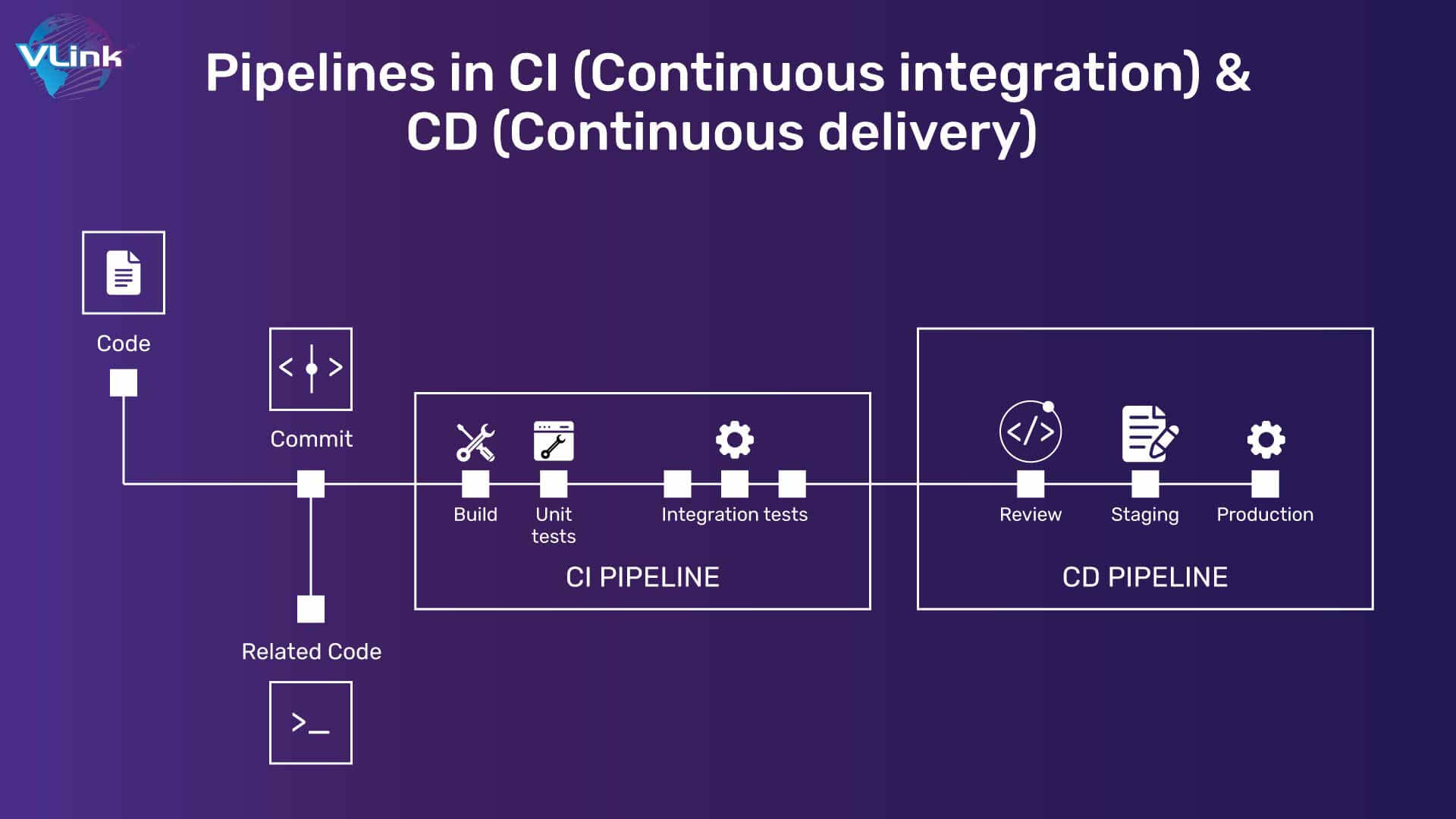Finding software problems before a project is released is essential for assuring project success from the viewpoints of both user engagement and financial viability. When compared to the production stage, fixing defects during testing is approximately seven times less expensive.
Testing, though, is costly and time-consuming. QA experts and executives may make better judgments that can result in a more successful testing process by having a better understanding of the best practices in software testing.
Hence, this blog from VLink’s experts will help learn and possibly implement the best practices of software testing & QA. But before we hop on to these practices, let’s understand the concepts involved.
Understanding the concepts
Implementing efficient QA and software testing management that offers tools and processes for developing bug-free solutions is the best approach to produce high-quality software. Tech companies are involved continuously in maintaining the performance and quality of their development to meet the expectations of end users.
The global market share of software quality management is also increasing at a CAGR of 9.9%. See the graph below:
 This means, it should be the utmost priority for your business to keep an eye on the maintenance of your business software applications.
This means, it should be the utmost priority for your business to keep an eye on the maintenance of your business software applications.
Coming to the point – Quality assurance, quality control, and testing are the three main components of software quality management.
Software quality assurance (SQA) is a well-recognized component of software quality management. It consists of a planned series of organizational actions. These measures aim to enhance the software development process by setting quality standards to prevent mistakes and faults in the final output.
Software Quality Control (SQC) constitutes an integral facet of quality management, encompassing a multitude of tasks meticulously designed to adhere to rigorous quality standards. Before software products are ushered into the realm of delivery, they undergo a rigorous certification process, driven by the diligent execution of quality control (QC) activities with a laser focus on the product.
The primary objective of testing is to detect and rectify technical issues within the software source code while simultaneously assessing the usability, performance, security, and compatibility of the final product. It not only stands as the cornerstone of quality assurance but also represents an indispensable phase in the software development process.
Software testing & QA best practices
A written strategy for testing should be in place so that it can serve as a roadmap for all parties involved. To develop clear communication, it should be carefully recorded. The strategy should have SMART (specific, measurable, attainable, relevant, and time-bound) goals and objectives.
- Specific: Define specific and more precise goals.
- Measurable: Measuring the progress using various metrics and tools.
- Achievable: Following the deadline to reach defined objectives.
- Relevant: The aligned goals should exactly match the requirements or business plan
- Time-bound: Sticking to the roadmap.
One of the beneficial approaches is to do software testing in SDLC at every initial stage. The shift-left technique recommends starting testing at the development stage and continuing it throughout the process. It has multiple advantages, including:
- Recognizing the issues at early stats, resulting in reduced time and cost.
- Aligning processes with Agile development.
- Embraces the inclusion of overall progress.
You must test frequently and early if you want integration to succeed. Automated testing may also have a lot of beneficial effects.
Automation testing offers the potential to reduce testing timelines and amplify testing comprehensiveness, precision, and feedback velocity.
 By delegating repetitive tasks to automated systems, it elevates the efficiency of your workforce, allowing them to focus on more intricate assignments, consequently boosting employee job satisfaction.
By delegating repetitive tasks to automated systems, it elevates the efficiency of your workforce, allowing them to focus on more intricate assignments, consequently boosting employee job satisfaction.
Because development is carried out with a testing-oriented approach, the process can minimize the number of faults and issues discovered during the initial phases. You can do this by following these processes:
- Pair programming
In this methodology, two programmers collaborate using a shared computer. While one is actively coding, the other assumes the role of an observer, offering suggestions and insights. This dynamic encourages developers to engage in discussions, assess options, and make joint decisions regarding challenges and trade-offs.
This collaborative process not only enhances knowledge sharing but also leads to the creation of superior quality code, as errors or bugs are identified and addressed either before or during the coding phase.
- Test-driven development (TDD)
In this method, the testing phase precedes the actual code creation. Initially, a test is formulated, intentionally causing it to fail. Subsequently, the developer proceeds to write the program's code, and once the code successfully passes the predefined test, the developer undertakes the task of refactoring the code for further optimization and improvement.
Thorough documentation of testing is crucial in software development. Every observation and the entire testing process must be diligently recorded and subsequently integrated into the testing report. The test report should be unambiguous and devoid of any potential for misinterpretation.  They should include the following:
They should include the following:
- Steps to recognize bugs.
- Proof of bug occurrence in terms of video or screenshot.
- Mentioning the resolution theoretically and logically
- Outcomes of the solutions after implementation.
An application or API encompasses various facets, each requiring comprehensive testing coverage. It is crucial to ensure that your tests encompass all these aspects; otherwise, you risk overlooking potential problems and bugs.
It's not sufficient to concentrate solely on functionality; other dimensions such as UI/UX, performance, and security play pivotal roles and can significantly influence your overall success. Hence, it's imperative to incorporate testing for these dimensions to guarantee a robust and reliable product.
While simulation may seem like an attractive choice for testing, it's important to acknowledge that no simulator or emulator can truly replicate the genuine end-user experience.
To ensure comprehensive testing, system, application, or bot automation tests should be conducted in environments that mimic real-world conditions, including scenarios with low battery levels, sluggish internet connections, network fluctuations, and unexpected pop-ups.
Testing on actual devices provides software developers with the opportunity to identify and rectify errors before the system is deployed, ultimately enhancing its reliability and performance.
The effective utilization of measurement metrics is vital for monitoring and assessing the outcomes and consequences of testing efforts. To harness the power of testing metrics, consider the following guidelines:
- Choose the Appropriate Metrics: Select metrics that align with your business objectives and are adaptable to your organization's infrastructure. Ensure that these metrics are in harmony with your overarching goals.
- Establish Realistic Targets: Acknowledge that achieving 100% in most metrics may not be feasible. It's crucial to identify attainable targets for each metric that reflect the practical constraints and objectives of your testing process.
- Leverage Complementary Metrics: Recognize that no single metric can provide a complete picture. Use multiple metrics in conjunction to gain a more comprehensive understanding of your testing outcomes and their impact.
- Seek Feedback and Enhance KPIs: Encourage feedback from individuals involved in metric tracking. They may identify shortcomings or propose improvements to your Key Performance Indicators (KPIs). Act on this feedback to continually refine your metrics and measurement processes.
By adhering to these principles, you can harness the full potential of testing metrics to guide your testing efforts effectively and align them with your organization's overarching goals.
Effective communication and collaboration are essential elements of a successful testing process. However, it's important to recognize that team members may possess varying skills that cater to specific automation testing roles. For instance, the task of writing test scripts demands the expertise of QA testers with in-depth knowledge of scripting languages.
Here is the distribution of time for the software testing tasks assigned to team members.
 Understanding and leveraging these diverse skill sets within your testing team can lead to a more efficient and well-rounded testing process, where each member contributes their expertise to achieve testing goals effectively.
Understanding and leveraging these diverse skill sets within your testing team can lead to a more efficient and well-rounded testing process, where each member contributes their expertise to achieve testing goals effectively.
Creating test cases for individual features offers the advantage of reusability across multiple tests, including integration tests. This approach not only promotes efficiency but also aids developers in pinpointing errors within specific features rather than the entire system.
However, testing may occasionally fall short in detecting certain bugs, potentially resulting in faulty updates that could disrupt or alter the functionality of an existing API.
To mitigate this risk, version calling is implemented, enabling customers to continue using the older version of the API. This strategy minimizes the impact of problematic updates on API users and helps maintain system stability.
Integrating Quality Assurance in software development
If you're contemplating the introduction of a robust QA (Quality Assurance) process into your development workflow or seeking to enhance your existing one, it's crucial to understand the necessary steps for a successful implementation.
Given the comprehensive nature of quality assurance, it's important to be prepared for some substantial effort. Here are the practices to follow to ensure the seamless integration of QA into your software development:
1- Analyze existing testing practices
QA engineers should start by gaining a deep understanding of your current situation. This involves a thorough examination of your project, development processes, available resources, tools, existing knowledge, and overall workflow. This assessment provides invaluable insights into your team's working dynamics and highlights areas of weakness or improvement.
2- Build the QA process
Depending on your existing QA framework, you may need to make minor adjustments to optimize its efficiency. Alternatively, a complete overhaul or the creation of a QA process may be necessary. This entails careful consideration of process specifics, defining relevant metrics, identifying required roles and tools, and evaluating the potential risks associated with these changes.
3- Implement the newly-built process
Rolling out a new process can be challenging, as it involves introducing new practices to a team with established routines. Conducting training sessions and holding meetings with the development team to communicate what to expect is vital.
This step becomes even more crucial if you're incorporating an external QA team, as it can potentially cause stress and anxiety among your existing team members.
4- Monitor the outcomes
It's essential to recognize that the benefits of a new process may not manifest immediately. Continuous monitoring of the QA process's performance is crucial to ensure that it aligns with the objectives defined at the outset. Adjustments and refinements may be necessary along the way, as QA is an iterative and adaptive process.
By following these best practices, you can lay the foundation for a robust QA process that enhances the quality of your software development while minimizing risks and ensuring the efficient operation of your team.
Focus on CI & CD (Continuous integration & continuous delivery)
Continuous Integration (CI) and Continuous Delivery (CD) are pivotal strategies in software development that complement the Agile methodology. These methodologies can be further strengthened by integrating a continuous testing strategy.
Without CI and CD, developers often work on different sections of the code independently and assemble them late in the development cycle. This approach can lead to issues related to cohesion, compatibility, and the interaction of various code segments.
 In the context of Continuous Integration, code is stored in a central repository. Developers focus on making incremental changes to the code and regularly upload these small sections of code to the central repository. This methodology can be enriched with quality management by conducting a series of tests each time the code is updated.
In the context of Continuous Integration, code is stored in a central repository. Developers focus on making incremental changes to the code and regularly upload these small sections of code to the central repository. This methodology can be enriched with quality management by conducting a series of tests each time the code is updated.
Continuous Delivery enables the frequent release of new iterations of your product. This rapid and efficient approach is instrumental in addressing bugs and issues that impact the user experience.
The key to success lies in integrating user feedback into your CI and CD processes. This ensures that issues are swiftly identified and addressed, leading to the release of a new and improved version of your product.
Additionally, it is crucial to incorporate testing into your process, such as having crowd testers conduct usability tests before making a new major version of your product available to users. This comprehensive approach ensures that your software development methods are not only agile but also quality-driven, resulting in a better user experience and a more robust product.
VLink ensures best software testing & QA integration in business applications
The days when you could overlook the problem-solving prowess of QA engineers in your development team are a thing of the past. Nowadays, it's virtually impossible to meet the demands and expectations of customers and the software market without a well-established quality assurance process.
This entails incorporating a series of strategic activities throughout the entire software development life cycle. However, it's important to acknowledge that executing such a process is no small feat. It demands a considerable investment of time and necessitates the alignment of the entire team with its objectives, guided by the expertise of QA professionals.
At VLink, we offer our expertise to assist you in implementing a robust QA process. This not only enhances your overall development workflow but also elevates productivity and ensures the delivery of high-quality results.
Frequently Asked Questions
QA implementation, or Quality Assurance implementation, refers to the practical application of systematic processes aimed at ensuring that a product or service aligns with predefined specifications and standards. It involves the execution of activities and procedures that establish and uphold the necessary requirements for the development or production of dependable and high-quality products.
Software testing is an integral part of the SDLC because it enhances the quality of the final product, reduces risks, and ensures a smoother, more reliable software deployment. It is a proactive approach to delivering software that meets user expectations and industry standards.
The Software Testing Life Cycle (STLC) is a structured sequence of activities conducted by a testing team to ensure the quality and reliability of a software product. STLC is a crucial component within the broader context of the Software Development Life Cycle (SDLC), focusing exclusively on the testing phases of the software development process.













